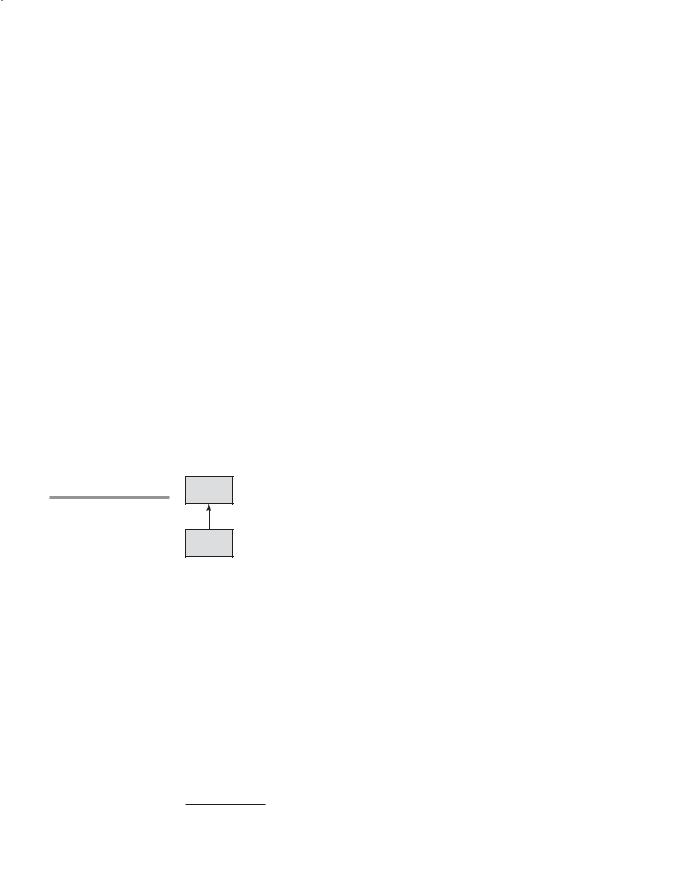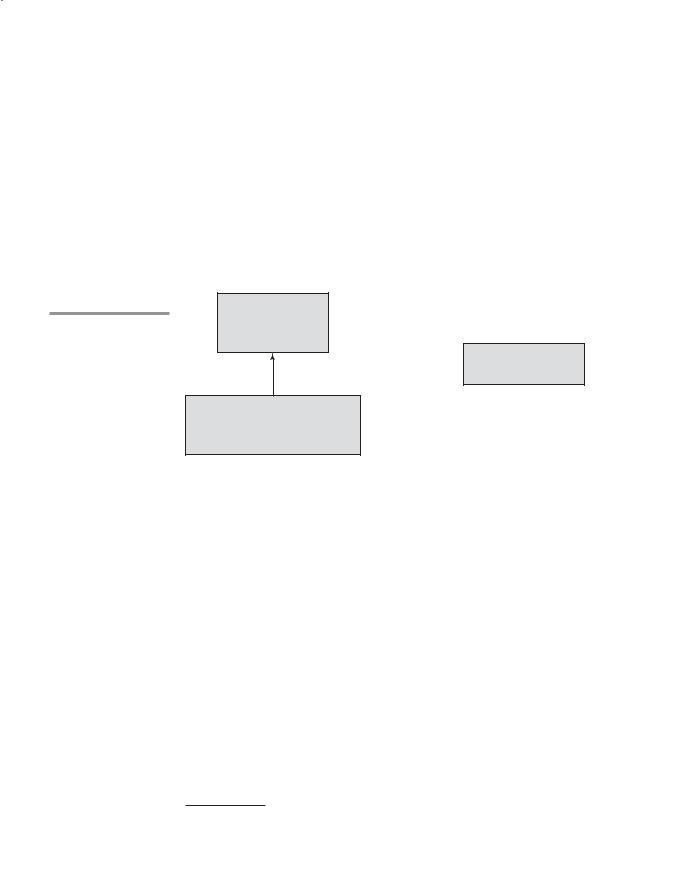
- •New to the Tenth Edition
- •Preface
- •Acknowledgments
- •About the Author
- •Contents
- •1.1 Reasons for Studying Concepts of Programming Languages
- •1.2 Programming Domains
- •1.3 Language Evaluation Criteria
- •1.4 Influences on Language Design
- •1.5 Language Categories
- •1.6 Language Design Trade-Offs
- •1.7 Implementation Methods
- •1.8 Programming Environments
- •Summary
- •Problem Set
- •2.1 Zuse’s Plankalkül
- •2.2 Pseudocodes
- •2.3 The IBM 704 and Fortran
- •2.4 Functional Programming: LISP
- •2.5 The First Step Toward Sophistication: ALGOL 60
- •2.6 Computerizing Business Records: COBOL
- •2.7 The Beginnings of Timesharing: BASIC
- •2.8 Everything for Everybody: PL/I
- •2.9 Two Early Dynamic Languages: APL and SNOBOL
- •2.10 The Beginnings of Data Abstraction: SIMULA 67
- •2.11 Orthogonal Design: ALGOL 68
- •2.12 Some Early Descendants of the ALGOLs
- •2.13 Programming Based on Logic: Prolog
- •2.14 History’s Largest Design Effort: Ada
- •2.15 Object-Oriented Programming: Smalltalk
- •2.16 Combining Imperative and Object-Oriented Features: C++
- •2.17 An Imperative-Based Object-Oriented Language: Java
- •2.18 Scripting Languages
- •2.19 The Flagship .NET Language: C#
- •2.20 Markup/Programming Hybrid Languages
- •Review Questions
- •Problem Set
- •Programming Exercises
- •3.1 Introduction
- •3.2 The General Problem of Describing Syntax
- •3.3 Formal Methods of Describing Syntax
- •3.4 Attribute Grammars
- •3.5 Describing the Meanings of Programs: Dynamic Semantics
- •Bibliographic Notes
- •Problem Set
- •4.1 Introduction
- •4.2 Lexical Analysis
- •4.3 The Parsing Problem
- •4.4 Recursive-Descent Parsing
- •4.5 Bottom-Up Parsing
- •Summary
- •Review Questions
- •Programming Exercises
- •5.1 Introduction
- •5.2 Names
- •5.3 Variables
- •5.4 The Concept of Binding
- •5.5 Scope
- •5.6 Scope and Lifetime
- •5.7 Referencing Environments
- •5.8 Named Constants
- •Review Questions
- •6.1 Introduction
- •6.2 Primitive Data Types
- •6.3 Character String Types
- •6.4 User-Defined Ordinal Types
- •6.5 Array Types
- •6.6 Associative Arrays
- •6.7 Record Types
- •6.8 Tuple Types
- •6.9 List Types
- •6.10 Union Types
- •6.11 Pointer and Reference Types
- •6.12 Type Checking
- •6.13 Strong Typing
- •6.14 Type Equivalence
- •6.15 Theory and Data Types
- •Bibliographic Notes
- •Programming Exercises
- •7.1 Introduction
- •7.2 Arithmetic Expressions
- •7.3 Overloaded Operators
- •7.4 Type Conversions
- •7.5 Relational and Boolean Expressions
- •7.6 Short-Circuit Evaluation
- •7.7 Assignment Statements
- •7.8 Mixed-Mode Assignment
- •Summary
- •Problem Set
- •Programming Exercises
- •8.1 Introduction
- •8.2 Selection Statements
- •8.3 Iterative Statements
- •8.4 Unconditional Branching
- •8.5 Guarded Commands
- •8.6 Conclusions
- •Programming Exercises
- •9.1 Introduction
- •9.2 Fundamentals of Subprograms
- •9.3 Design Issues for Subprograms
- •9.4 Local Referencing Environments
- •9.5 Parameter-Passing Methods
- •9.6 Parameters That Are Subprograms
- •9.7 Calling Subprograms Indirectly
- •9.8 Overloaded Subprograms
- •9.9 Generic Subprograms
- •9.10 Design Issues for Functions
- •9.11 User-Defined Overloaded Operators
- •9.12 Closures
- •9.13 Coroutines
- •Summary
- •Programming Exercises
- •10.1 The General Semantics of Calls and Returns
- •10.2 Implementing “Simple” Subprograms
- •10.3 Implementing Subprograms with Stack-Dynamic Local Variables
- •10.4 Nested Subprograms
- •10.5 Blocks
- •10.6 Implementing Dynamic Scoping
- •Problem Set
- •Programming Exercises
- •11.1 The Concept of Abstraction
- •11.2 Introduction to Data Abstraction
- •11.3 Design Issues for Abstract Data Types
- •11.4 Language Examples
- •11.5 Parameterized Abstract Data Types
- •11.6 Encapsulation Constructs
- •11.7 Naming Encapsulations
- •Summary
- •Review Questions
- •Programming Exercises
- •12.1 Introduction
- •12.2 Object-Oriented Programming
- •12.3 Design Issues for Object-Oriented Languages
- •12.4 Support for Object-Oriented Programming in Smalltalk
- •12.5 Support for Object-Oriented Programming in C++
- •12.6 Support for Object-Oriented Programming in Objective-C
- •12.7 Support for Object-Oriented Programming in Java
- •12.8 Support for Object-Oriented Programming in C#
- •12.9 Support for Object-Oriented Programming in Ada 95
- •12.10 Support for Object-Oriented Programming in Ruby
- •12.11 Implementation of Object-Oriented Constructs
- •Summary
- •Programming Exercises
- •13.1 Introduction
- •13.2 Introduction to Subprogram-Level Concurrency
- •13.3 Semaphores
- •13.4 Monitors
- •13.5 Message Passing
- •13.6 Ada Support for Concurrency
- •13.7 Java Threads
- •13.8 C# Threads
- •13.9 Concurrency in Functional Languages
- •13.10 Statement-Level Concurrency
- •Summary
- •Review Questions
- •Problem Set
- •14.1 Introduction to Exception Handling
- •14.2 Exception Handling in Ada
- •14.3 Exception Handling in C++
- •14.4 Exception Handling in Java
- •14.5 Introduction to Event Handling
- •14.6 Event Handling with Java
- •14.7 Event Handling in C#
- •Review Questions
- •Problem Set
- •15.1 Introduction
- •15.2 Mathematical Functions
- •15.3 Fundamentals of Functional Programming Languages
- •15.4 The First Functional Programming Language: LISP
- •15.5 An Introduction to Scheme
- •15.6 Common LISP
- •15.8 Haskell
- •15.10 Support for Functional Programming in Primarily Imperative Languages
- •15.11 A Comparison of Functional and Imperative Languages
- •Review Questions
- •Problem Set
- •16.1 Introduction
- •16.2 A Brief Introduction to Predicate Calculus
- •16.3 Predicate Calculus and Proving Theorems
- •16.4 An Overview of Logic Programming
- •16.5 The Origins of Prolog
- •16.6 The Basic Elements of Prolog
- •16.7 Deficiencies of Prolog
- •16.8 Applications of Logic Programming
- •Review Questions
- •Programming Exercises
- •Bibliography
- •Index

12.2 Object-Oriented Programming |
525 |
12.2Object-Oriented Programming
12.2.1Introduction
The concept of object-oriented programming had its roots in SIMULA 67 but was not fully developed until the evolution of Smalltalk resulted in Smalltalk 80 (in 1980, of course). Indeed, some consider Smalltalk to be the base model for a purely object-oriented programming language. A language that is object oriented must provide support for three key language features: abstract data types, inheritance, and dynamic binding of method calls to methods. Abstract data types were discussed in detail in Chapter 11, so this chapter focuses on inheritance and dynamic binding.
12.2.2Inheritance
There has long been pressure on software developers to increase their productivity. This pressure has been intensified by the continuing reduction in the cost of computer hardware. By the middle to late 1980s, it became apparent to many software developers that one of the most promising opportunities for increased productivity in their profession was in software reuse. Abstract data types, with their encapsulation and access controls, are obviously candidates for reuse. The problem with the reuse of abstract data types is that, in nearly all cases, the features and capabilities of the existing type are not quite right for the new use. The old type requires at least some minor modifications. Such modifications can be difficult, because they require the person doing the modification to understand part, if not all, of the existing code. In many cases, the person doing the modification is not the program’s original author. Furthermore, in many cases, the modifications require changes to all client programs.
A second problem with programming with abstract data types is that the type definitions are all independent and are at the same level. This design often makes it impossible to organize a program to match the problem space being addressed by the program. In many cases, the underlying problem has categories of objects that are related, both as siblings (being similar to each other) and as parents and children (having a descendant relationship).
Inheritance offers a solution to both the modification problem posed by abstract data type reuse and the program organization problem. If a new abstract data type can inherit the data and functionality of some existing type, and is also allowed to modify some of those entities and add new entities, reuse is greatly facilitated without requiring changes to the reused abstract data type. Programmers can begin with an existing abstract data type and design a modified descendant of it to fit a new problem requirement. Furthermore, inheritance provides a framework for the definition of hierarchies of related classes that can reflect the descendant relationships in the problem space.
The abstract data types in object-oriented languages, following the lead of SIMULA 67, are usually called classes. As with instances of abstract data types, class instances are called objects. A class that is defined through inheritance

526 |
Chapter 12 Support for Object-Oriented Programming |
from another class is a derived class or subclass. A class from which the new class is derived is its parent class or superclass. The subprograms that define the operations on objects of a class are called methods. The calls to methods are sometimes called messages. The entire collection of methods of an object is called the message protocol, or message interface, of the object. Computations in an object-oriented program are specified by messages sent from objects to other objects, or in some cases, to classes.
Passing a message is indeed different from calling a subprogram. A subprogram typically processes data that is either passed by its caller as a parameter or is accessed nonlocally or globally. A message is sent to an object is a request to execute one of its methods. At least part of the data on which the method is to operate is the object itself. Objects have methods that define processes the object can perform on itself. Because the objects are of abstract data types, these should be the only ways to manipulate the object. A subprogram defines a process that it can perform on any data sent to it (or made available nonlocally or globally).
As a simple example of inheritance, consider the following: Suppose we have a class named Vehicles, which has variables for year, color, and make. A natural specialization, or subclass, of this would be Truck, which could inherit the variables from Vehicle, but would add variables for hauling capacity and number of wheels. Figure 12.1 shows a simple diagram to indicate the relationship between the Vehicle class and the Truck class, in which the arrow points to the parent class.
Figure 12.1
Vehicle
A simple example of inheritance
Truck
There are several ways a derived class can differ from its parent.1 Following are the most common differences between a parent class and its subclasses:
1.The parent class can define some of its variables or methods to have private access, which means they will not be visible in the subclass.
2.The subclass can add variables and/or methods to those inherited from the parent class.
3.The subclass can modify the behavior of one or more of its inherited methods. A modified method has the same name, and often the same protocol, as the one of which it is a modification.
The new method is said to override the inherited method, which is then called an overridden method. The purpose of an overriding method is to
1. If a subclass does not differ from its parent, it obviously serves no purpose.

12.2 Object-Oriented Programming |
527 |
provide an operation in the subclass that is similar to one in the parent class, but is customized for objects of the subclass. For example, a parent class, Bird, might have a draw method that draws a generic bird. A subclass of Bird named Waterfowl could override the draw method inherited from Bird to draw a generic waterfowl, perhaps a duck.
Classes can have two kinds of methods and two kinds of variables. The most commonly used methods and variables are called instance methods and instance variables. Every object of a class has its own set of instance variables, which store the object’s state. The only difference between two objects of the same class is the state of their instance variables.2 For example, a class for cars might have instance variables for color, make, model, and year. Instance methods operate only on the objects of the class. Class variables belong to the class, rather than its object, so there is only one copy for the class. For example, if we wanted to count the number of instances of a class, the counter could not be an instance variable—it would need to be a class variable. Class methods can perform operations on the class, and possibly also on the objects of the class.
If a new class is a subclass of a single parent class, then the derivation process is called single inheritance. If a class has more than one parent class, the process is called multiple inheritance. When a number of classes are related through single inheritance, their relationships to each other can be shown in a derivation tree. The class relationships in a multiple inheritance can be shown in a derivation graph.
One disadvantage of inheritance as a means of increasing the possibility of reuse is that it creates dependencies among the classes in an inheritance hierarchy. This result works against one of the advantages of abstract data types, which is that they are independent of each other. Of course, not all abstract data types must be completely independent. But in general, the independence of abstract data types is one of their strongest positive characteristics. However, it may be difficult, if not impossible, to increase the reusability of abstract data types without creating dependencies among some of them. Furthermore, in many cases, the dependencies naturally mirror dependencies in the underlying problem space.
12.2.3Dynamic Binding
The third characteristic (after abstract data types and inheritance) of objectoriented programming languages is a kind of polymorphism3 provided by the dynamic binding of messages to method definitions. This is sometimes called dynamic dispatch. Consider the following situation: There is a base class, A, that defines a method draw that draws some figure associated with the base class. A second class, B, is defined as a subclass of A. Objects of this new class also need a draw method that is like that provided by A but a bit different
2.This is not true in Ruby, which allows different objects of the same class to differ in other ways.
3.Polymorphism is defined in Chapter 9.

528 |
Chapter 12 Support for Object-Oriented Programming |
Figure 12.2
Dynamic binding
because the subclass objects are slightly different. So, the subclass overrides the inherited draw method. If a client of A and B has a variable that is a reference to class A’s objects, that reference also could point at class B’s objects, making it a polymorphic reference. If the method draw, which is defined in both classes, is called through the polymorphic reference, the run-time system must determine, during execution, which method should be called, A’s or B’s (by determining which type object is currently referenced by the reference).4 Figure 12.2 shows this situation.
Polymorphism is a natural part of any object-oriented language that is statically typed. In a sense, polymorphism makes a statically typed language a little bit dynamically typed, where the little bit is in some bindings of method calls to methods. The type of a polymorphic variable is indeed dynamic.
public class A {
. . .
draw( ) {. . .}
. . .
}
public class B extends A {
. . .
draw( ) {. . .}
. . .
}
client
. . .
A myA = new A ( ); myA.draw ( );
. . .
The approach just described is not the only way to design polymorphic references. One alternative, which is used in Objective-C, is described in Section 12.6.3.
One purpose of dynamic binding is to allow software systems to be more easily extended during both development and maintenance. Suppose we have a catalog of used cars that is implemented as a car class and a subclass for each car in the catalog. The subclasses contain an image of the car and specific information about the car. Users can browse the cars with a program that displays the images and information about each car as the user browses to it. The display of each car (and its information) includes a button that the user can click if he or she is interested in that particular car. After going through the whole catalog, or as much of the catalog as the user wants to see, the system will print the images and information about the cars of interest to the user. One way to implement this system is to place a reference to the object of each car of interest in an array of references to the base class, car. When the user is ready, information about all of the cars of interest could be printed for the user to study and compare the cars in the list. The list of cars will of course change frequently. This will necessitate corresponding changes in the subclasses of car. However, changes to the collection of subclasses will not require any other changes to the system.
4. Dynamic binding of method calls to methods is sometimes called dynamic polymorphism.
